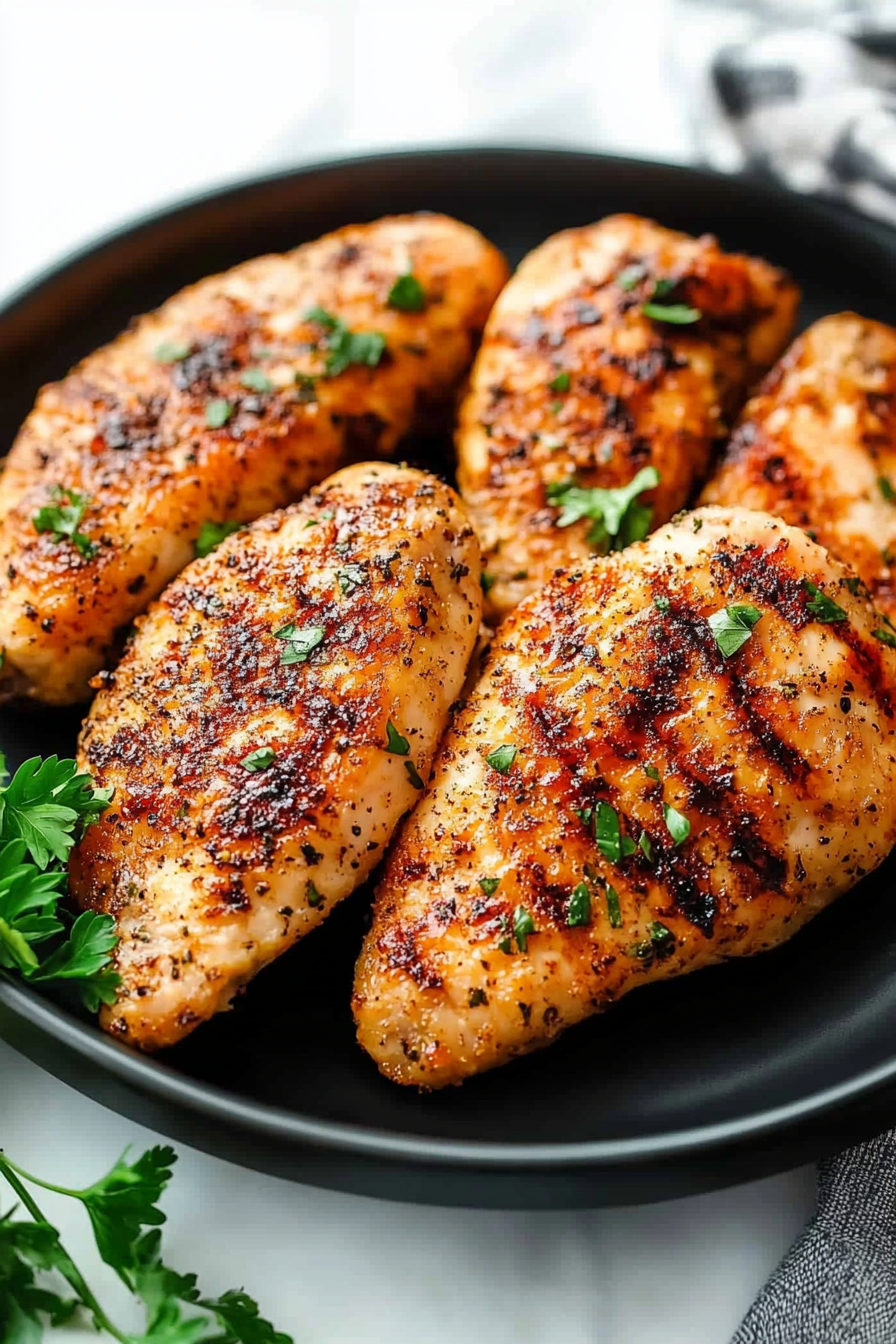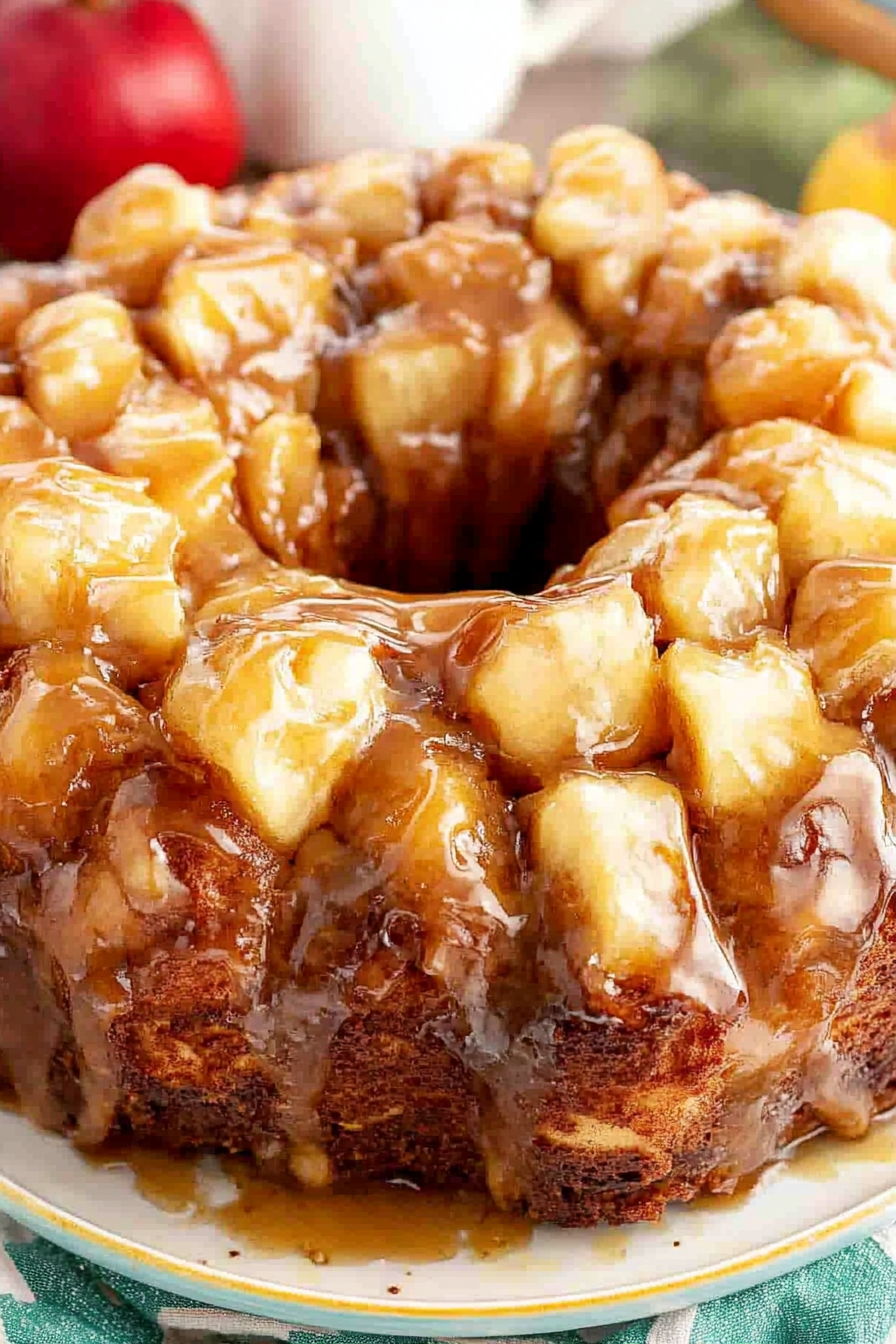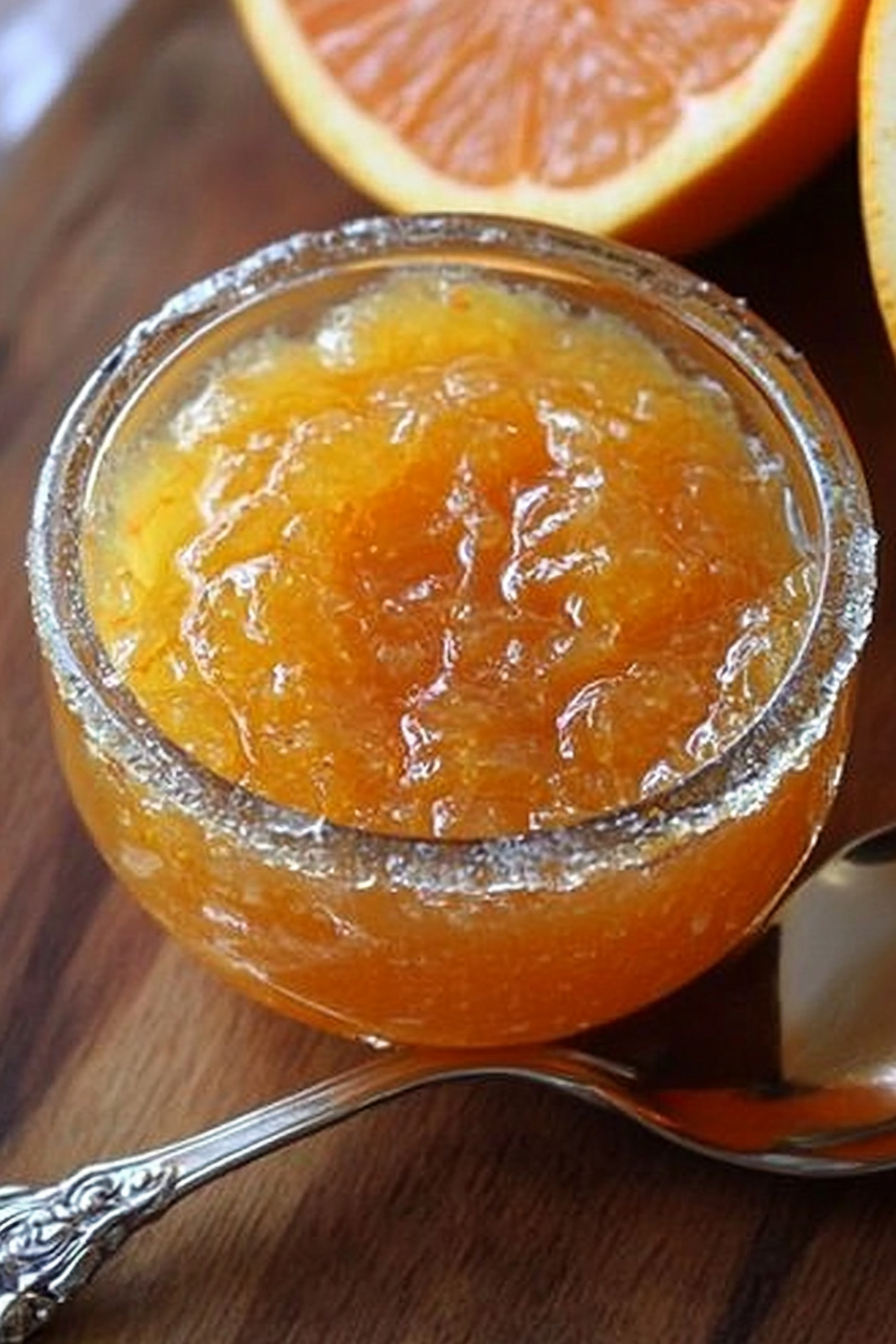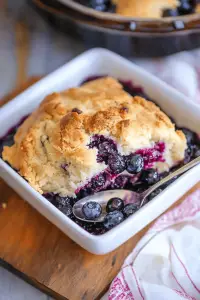I’ve got a soft spot for weekend mornings when the kitchen smells like warm cinnamon and sunny fruit. My grandmother used to bake something similar, but with apples, and the whole house would glow with that cozy, just-out-of-the-oven feeling. This pineapple monkey bread is that same comforting hug, only brighter—pockets of pineapple sweetness tucked into pull-apart dough, all crowned with a glossy glaze. It’s incredibly forgiving, too. You can make it the night before, wake up to the scent, and bake it while you brew the coffee. It’s like a sunshine-filled brunch in a pan. If you’re a cinnamon-roll fan, you’ll probably fall for pineapple monkey bread instantly—think of it as a lighter, fruitier cousin that learns real confidence from simple ingredients. This recipe has become our go-to when friends pop by unannounced or when I want a no-fuss crowd-pleaser that still feels special. I always do this when I crave something warm and comforting but don’t want to fuss with dough from scratch every morning—pineapple monkey bread is my lifesaver on busy weekends and family gatherings.
What is Pineapple Monkey Bread?
Pineapple monkey bread is essentially a pull-apart bread made with bite-sized pieces of pizza-velvety-soft dough, rolled in a cinnamon-sugar coating, and studded with crushed pineapple. The name “monkey bread” comes from how you tear off pieces and share—the whole loaf becomes a basketful of little bites rather than neat slices. Think of it as a sweet, tender dough that hides little pineapple pockets, creating a burst of tropical brightness in every bite. It’s super forgiving: you can swap in canned crushed pineapple or pineapple tidbits, adjust the spice level, and even add nuts if you like. It’s a cozy, no-fuss dessert-or-breakfast hybrid that tastes like a celebration but waits for you to press “bake.” I love that the dough rises slowly while you’re sipping coffee, and the glaze makes the whole thing sing. It’s essentially a brioche-inspired dough with a fruity twist, turned into a shareable crown of goodness.
Why you’ll love this recipe?
What I love most about pineapple monkey bread is how it feels like a party in your kitchen. The aroma alone is a magnet: the butter, the cinnamon, the fruity brightness from pineapple—it pulls people in like a magnet. The flavor is bright and caramel-rich without being overly sweet, and the texture is all about pull-apart tenderness with little bursts of tangy fruit. It’s a crowd-pleaser that doesn’t require complicated technique. The dough is forgiving, the filling is cozy, and the glaze ties everything together with a glossy, just-slick-enough finish. On a budget, this recipe shines too—the ingredients are simple, and you get a big, shareable cake that feels special but didn’t demand last-minute grocery runs. It’s a versatile dish I reach for in countless situations: weekend brunch, a birthday morning, or a casual family dessert after a hearty dinner. What I love most about this is that you can shape it to suit your mood—go extra fruity, go extra cinnamon, or drizzle a simple glaze and call it a day. It’s a little thing that makes the ordinary feel magical.
How do I make Pineapple Monkey Bread?
Quick Overview
This pineapple monkey bread starts with a soft, enriched dough that’s cut into bite-sized pieces. Each piece gets a quick toss in cinnamon-sugar, then tucked with a spoonful of pineapple filling before being stacked into a seasoned Bundt pan. The magic happens as it bakes: the pieces fuse into one soft, pull-apart loaf with pockets of fruit. A simple vanilla-glaze finishes it off, giving a gentle gloss that catches the morning light. The whole process is forgiving: you can refrigerate the dough the night before or even bake the loaf a bit longer if your oven runs warmly. The result is a warm, comforting loaf that tastes like a Sunday treat but can be pulled together on a weekday morning with a little planning.
Ingredients
For the Main Batter:
– 2 1/4 teaspoons active dry yeast (one packet)
– 1 cup warm milk (about 110°F/43°C)
– 1/3 cup granulated sugar
– 1/3 cup unsalted butter, melted
– 2 large eggs
– 3 1/2 cups all-purpose flour, plus more for dusting
– 1 teaspoon salt
For the Filling:
– 1/2 cup unsalted butter, melted
– 1 cup light brown sugar, packed
– 2 1/2 teaspoons ground cinnamon
– 1 cup crushed pineapple, well drained (reserve a few teaspoons of juice if you want a touch more moisture)
– 1/2 cup finely chopped walnuts or pecans (optional)
For the Glaze:
– 1 cup powdered sugar
– 2–3 tablespoons pineapple juice (or dairy-free milk for a lighter glaze)
– 1/2 teaspoon vanilla extract
Step-by-Step Instructions
Step 1: Preheat & Prep Pan
Preheat your oven to 350°F (175°C). Butter a large Bundt pan generously or spray with nonstick spray. If you want easier removal, dust the pan with a little flour after buttering. I’ve learned the hard way that a well-greased pan saves you from heartbreak when you unmold the loaf. Line the counter with a little parchment if you’re rolling pieces and want to keep things clean. A few droplets of water on your hands can prevent sticking as you roll the dough pieces.
Step 2: Mix Dry Ingredients
In a big bowl, whisk together 3 1/2 cups flour and the salt. This step keeps the salt evenly distributed so you don’t end up with a salty pocket somewhere in the loaf. If you have a stand mixer, you can use the paddle on low speed to combine; or you can do it by hand—I actually enjoy this part with a wooden spoon. The dough should look slightly shaggy but come together when you add the liquids.
Step 3: Mix Wet Ingredients
In a separate bowl, combine the warm milk, sugar, and yeast. Let it sit for about 5 minutes until it’s foamy—this is your tiny signal that the yeast is alive and happily waking up. Stir in the melted butter and eggs. The mixture should look smooth and a touch glossy. If you’re using vanilla in the dough, add a half-teaspoon here. I’ll sometimes add a splash of almond extract if I’m feeling fancy—it adds a subtle nuttiness that pairs beautifully with pineapple.
Step 4: Combine
Pour the wet mixture into the dry ingredients and mix until a soft, cohesive dough forms. If it’s a touch sticky, don’t worry—dust your hands with a little flour and keep kneading gently for a minute or two until it’s smooth. You want a dough that’s pliable but not tough. If you’re a timer, 6–8 minutes of kneading by hand is plenty. If using a stand mixer, 4–5 minutes on medium-low does the job. Cover and let the dough rise in a warm spot for about 1 hour, or until it’s puffed and almost doubled.
Step 5: Prepare Filling
While the dough rises, whisk together the brown sugar and cinnamon. Toss in the crushed pineapple and nuts if you’re using them. The pineapple should be fairly dry; you don’t want extra moisture to pool in the pan. A quick press with paper towels helps remove excess juice. The idea is to have sweet, spiced crumbs with little pops of pineapple—bright, not soggy.
Step 6: Layer & Swirl
Roll the dough into a large rectangle on a floured surface, then brush with the melted butter and sprinkle with the cinnamon-sugar mixture. Scatter a portion of the pineapple filling across the surface. Roll the dough up into a log, then slice into about 1-inch pieces. Toss each piece in a bit more cinnamon-sugar so every bite has that signature crumbly edge. Drop the pieces into the prepared Bundt pan, layering them and pinching a few with a gloved hand to keep everything snug. If you want a bit more swirl, tuck a few pineapple pieces between layers as you go. The goal is a chunky, rustic look—some pieces peeking out create gorgeous caramel pockets as it bakes.
Step 7: Bake
Bake for 35–45 minutes, or until the top is deeply golden and a toothpick inserted into a dough piece comes out clean or with a few moist crumbs. If the loaf browns too quickly on top, tent loosely with a piece of foil for the last 10–15 minutes. Every oven is different; you may need to adjust the time by ±5 minutes. When you pull it out, the bread should feel puffed and springy, with those characteristic pull-apart edges that look irresistibly fudgy.
Step 8: Cool & Glaze
Let the loaf cool for 10–15 minutes in the pan before turning it out onto a rack. The glaze comes together fast: whisk together powdered sugar, pineapple juice, and vanilla until smooth. It should be pourable but not runny. Drizzle or spoon over the loaf while it’s still warm so it soaks into the nooks and crannies. If you want a thicker glaze, add a touch more sugar; for a thinner glaze, splash in a few more drops of juice. I often reserve a spoonful of pineapple juice to loosen the glaze to the perfect consistency. The glaze should cling to the surface and form a light sheen—not a puddle.
Step 9: Slice & Serve
Invert the loaf onto a serving platter and let it rest for a moment so any glaze can settle. Slice thickly with a serrated knife—the pull-apart texture makes it easy to break into generous pieces. Serve warm with a cup of coffee or a scoop of vanilla ice cream if you’re feeling indulgent. The smell alone will have people wandering into the kitchen, eyes bright, mouths already smiling. If you’ve got leftovers (rare in our house), reheat individual pieces gently in the microwave for a quick breakfast treat and let the glaze warm through with the bread’s own sweetness.
What to Serve It With
Pineapple monkey bread is a total showstopper in any breakfast or brunch spread, but you can tailor it to the moment. Here are a few ideas that have worked beautifully in our home:
For Breakfast: A pot of strong coffee, a dollop of yogurt, and sliced fresh fruit to balance the sweetness. I like to set a few orange zest curls on the table for a bright contrast. A simple side of scrambled eggs keeps the meal balanced and satisfying.
For Brunch: Pair with sparkling water with a splash of pineapple juice or a light citrus tea. A few citrus segments on the side and a mini fruit salad elevate the presentation. If you’re entertaining, lightly dust the top with powdered sugar for a pretty finish.
As Dessert: A scoop of vanilla or coconut ice cream turns pineapple monkey bread into a creamy, warm dessert with a tropical vibe. A drizzle of coconut caramel adds a fun, beachy touch that your guests will adore.
For Cozy Snacks: Cut into thick slices and serve with hot cocoa or chai. It’s the kind of snack that begs for late-night conversations and long, lingering chats with friends. My kids actually ask for seconds, especially when I hide extra pineapple bits in the dough—they swear it’s magic.
Top Tips for Perfecting Your Pineapple Monkey Bread
Here are practical pointers that come from years of baking this recipe and learning what little tweaks make a big difference.
Dough Prep: Make sure your milk is warm, not hot. If it’s too hot, it’ll kill the yeast; too cool, and the dough won’t rise as nicely. I always proof the yeast in a small bowl first, then add it to the rest. A 60–75 minute rise is typical in a warm kitchen, but if your house is chilly, give it an extra 15 minutes or so. The texture should be soft and pillowy, not stiff.
Mixing Advice: Don’t overwork the dough once you’ve added the liquids. Overkneading can make the bread tough. If you’re kneading by hand, stop as soon as the dough smooths out. A few pockets of flour are okay—this is a rustic bread, not a bakery model. If you’re using a mixer, use a low speed and watch the dough come together; you’ll notice it forms a smooth, cohesive ball without sticking to the bowl excessively.
Swirl Customization: The pineapple pieces are what make this loaf special. If you want more pineapple flavor, increase the filling by about 1/4 cup and balance with extra cinnamon. For a lighter version, reduce the brown sugar a bit and up the pineapple, so you still retain that sweet-tangy contrast. You can also scatter some chopped crystallized ginger for a tiny zing that makes the aroma even more irresistible.
Ingredient Swaps: Swap almond milk for dairy milk for a dairy-free version (the fat in almond milk helps keep the bread tender). If you’re not fond of nuts, leave them out. For a more tropical vibe, toss in a handful of shredded coconut into the filling. If you want a denser loaf, add another 1/4 cup of flour, a touch more milk if needed, and let it rest a little longer for extra rise.
Baking Tips: If you’re baking in a dark/nonstick Bundt pan, you might see faster browning. In that case, tent with foil and finish with a glaze once the loaf is fully cooked. If your oven runs cool, you may need to add 5–10 minutes. Keep an eye on the doneness and test with a skewer in a dough piece in the center. It should come out with a few moist crumbs, not raw dough.
Glaze Variations: The glaze is optional, but it ties everything together beautifully. For a tangy twist, mix in a little lemon zest or lime zest. For a deeper glaze, use a milk-based glaze with a touch of cream cheese. If you want a white chocolate twist, you can gently whisk in 2 tablespoons of melted white chocolate into the warm glaze. Drizzle generously to let it soak into those crevices.
Lessons learned: always let the loaf rest a bit after baking before glazing so the sugars don’t just slip off the surface. And while it’s tempting to slice immediately, a short rest lets the flavors settle and makes cutting cleaner.
Storing and Reheating Tips
Leftover pineapple monkey bread is rare in our house, but when there are, I handle it with care to preserve that soft, melty crumb. Here’s how I keep it fresh and tasty.
Room Temperature: The loaf is best enjoyed the same day, but you can cover it loosely with foil at room temperature for up to 24 hours. Don’t seal it airtight; you want a little air to keep the top from sweating and turning soft.
Refrigerator Storage: Wrap tightly in plastic wrap or place slices in an airtight container. It will stay good for up to 3–4 days, though the texture may soften a bit as it sits. Reheat gently in a 300°F (150°C) oven for 8–10 minutes or briefly in the microwave in 15–20 second bursts if you’re in a rush.
Freezer Instructions: If you want to stash this for longer, freeze individual slices or the entire loaf, tightly wrapped, for up to 2–3 months. Thaw overnight in the fridge, then reheat; you may want to re-glaze a touch to revive the gloss and moisture. The pineapple pieces tend to hold up well in the freezer as long as they’re drained well before assembly.
Glaze Timing Advice: If you’re freezing the loaf, consider freezing without glaze and adding it fresh when you reheat. The glaze can cause the loaf to feel a little wetter after thawing, so a fresh drizzle is a nice touch.
Frequently Asked Questions
Final Thoughts
This pineapple monkey bread has earned a permanent spot in my family’s recipe lineup. It’s easy enough for a busy morning, but special enough to feel like a celebration—perfect for sharing with neighbors, friends, or whoever happens to wander into your kitchen while it bakes. The combination of tender dough, cinnamon warmth, and bright pineapple is a little happiness-in-a-pan. If you’re craving something sweet but not too heavy, this is your answer. Try it with a different fruit swap next time—mango, peach, or even spiced apples—and you’ll see how adaptable this approach really is. I’d love to hear how yours turns out, whether you drizzle extra glaze or go bold with nuts. Happy baking, friends!
And if you’re enjoying pineapple monkey bread, you might like to explore more cozy brunch ideas—like my favorite cinnamon roll morning bake or a citrusy sweet bread that pairs just as beautifully with coffee. Share your variations in the comments below, rate the recipe, and tell me which pineapple bite was your favorite. I’m always excited to hear what you cook up in your kitchen.
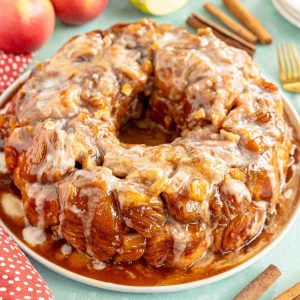
Pineapple Monkey Bread
Ingredients
Monkey Bread Dough
- 2 cans refrigerated biscuit dough (16 oz each)
- 0.5 cup butter melted
- 1 cup granulated sugar
- 2 teaspoon ground cinnamon
Pineapple Filling
- 1 can crushed pineapple drained (20 oz)
- 0.5 cup brown sugar packed
- 0.25 cup butter melted
Caramel Glaze
- 1 cup brown sugar packed
- 0.25 cup butter
- 2 tablespoon corn syrup (optional, for extra shine)
Optional Frosting
- 1 cup powdered sugar
- 1 tablespoon pineapple juice or milk
Instructions
Preparation Steps
- Preheat oven to 350°F (175°C). Grease and flour a 10-inch Bundt pan or tube pan.
- In a large bowl, melt 0.5 cup butter. In a separate bowl or a large zip-top bag, combine 1 cup granulated sugar and 2 teaspoons cinnamon.2 cans refrigerated biscuit dough
- Separate the biscuit dough and cut each biscuit into 4 pieces. Dip each piece into the melted butter, then toss in the sugar-cinnamon mixture until well coated.2 cans refrigerated biscuit dough
- Place the coated biscuit pieces into the prepared Bundt pan.
- In a medium saucepan, combine 1 cup brown sugar, 0.25 cup melted butter, and 2 tablespoons corn syrup (if using). Heat over medium heat, stirring, until the sugar is dissolved and the mixture is smooth. Bring to a gentle boil for 1 minute.2 cans refrigerated biscuit dough
- Pour the caramel mixture evenly over the biscuit pieces in the pan.
- Bake for 35-40 minutes, or until golden brown and cooked through. The caramel should be bubbly.
- Let the monkey bread cool in the pan for 10 minutes.
- Invert the pan onto a serving plate. Let the pan sit for a minute, then carefully lift it off.
- For the optional frosting: Whisk together 1 cup powdered sugar and 1 tablespoon pineapple juice until smooth. Drizzle over the warm monkey bread.2 cans refrigerated biscuit dough
- Serve warm.
Notes
Featured Comments
“Impressed! Clear steps and absolutely loved results. Perfect for busy nights.”
“New favorite here — quick weeknight win. crowd-pleaser was spot on.”
“Super easy and turned out amazing! My family asked for seconds. Saving this one.”
“This sweet treat was absolutely loved — the zingy really stands out. Thanks!”
“Made it tonight and wow — so flavorful! Will definitely make pineapple monkey bread again.”
“Packed with flavor and so simple. Exactly what I wanted from pineapple monkey bread.”




